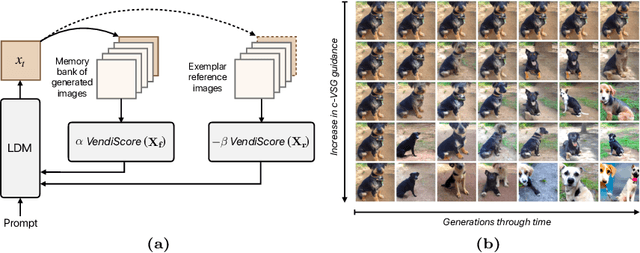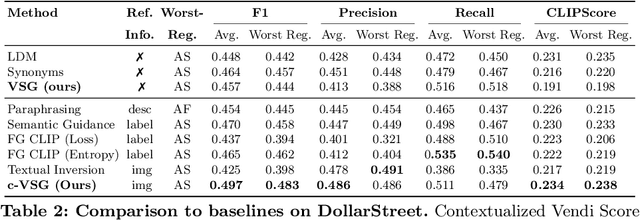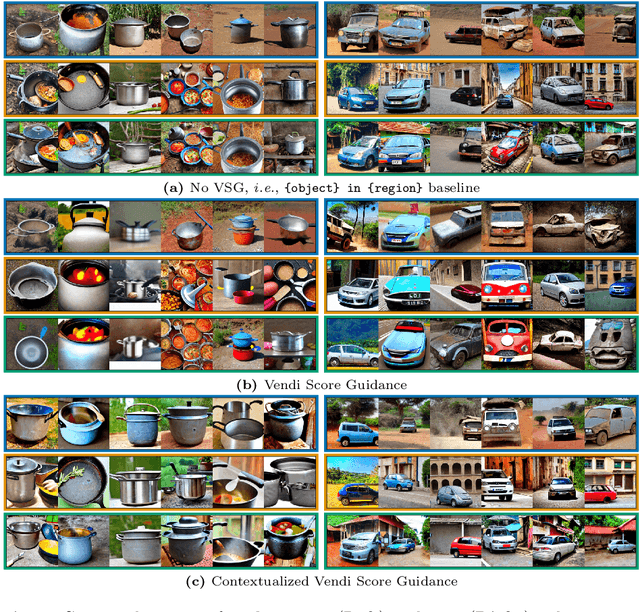Improving Geo-diversity of Generated Images with Contextualized Vendi Score Guidance
Paper and Code
Jun 06, 2024



With the growing popularity of text-to-image generative models, there has been increasing focus on understanding their risks and biases. Recent work has found that state-of-the-art models struggle to depict everyday objects with the true diversity of the real world and have notable gaps between geographic regions. In this work, we aim to increase the diversity of generated images of common objects such that per-region variations are representative of the real world. We introduce an inference time intervention, contextualized Vendi Score Guidance (c-VSG), that guides the backwards steps of latent diffusion models to increase the diversity of a sample as compared to a "memory bank" of previously generated images while constraining the amount of variation within that of an exemplar set of real-world contextualizing images. We evaluate c-VSG with two geographically representative datasets and find that it substantially increases the diversity of generated images, both for the worst performing regions and on average, while simultaneously maintaining or improving image quality and consistency. Additionally, qualitative analyses reveal that diversity of generated images is significantly improved, including along the lines of reductive region portrayals present in the original model. We hope that this work is a step towards text-to-image generative models that reflect the true geographic diversity of the world.
 Add to Chrome
Add to Chrome Add to Firefox
Add to Firefox Add to Edge
Add to Edge